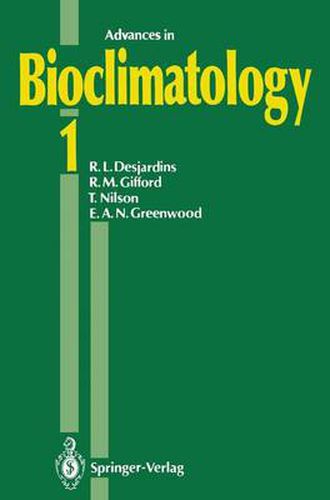Readings Newsletter
Become a Readings Member to make your shopping experience even easier.
Sign in or sign up for free!
You’re not far away from qualifying for FREE standard shipping within Australia
You’ve qualified for FREE standard shipping within Australia
The cart is loading…






This title is printed to order. This book may have been self-published. If so, we cannot guarantee the quality of the content. In the main most books will have gone through the editing process however some may not. We therefore suggest that you be aware of this before ordering this book. If in doubt check either the author or publisher’s details as we are unable to accept any returns unless they are faulty. Please contact us if you have any questions.
Atmospheric carbon dioxide concentration has increased globally from about 280 ppm before the Industrial Revolution (Pearman 1988) to about 353 ppm in 1990. That increase, and the continuing increase at a rate of about 1.5 ppm per annum, owing mainly to fossil fuel burning, is likely to cause change in climate, in primary productivity of terrestrial vegetation (managed and unmanaged), and in the degree of net sequestration of atmospheric CO into organic form. The quantitative role 2 of the latter in attenuating the increase in atmospheric CO concentration itself is 2 an important but uncertain element of the global carbon-cycle models that are required to predict future increases of atmospheric CO concentration. 2 In my experience in workshops and other multidisciplinary gatherings, argument arises in discussion of this topic among different groups of scientists such as bioclimatologists, plant physiologists, biogeochemists and ecologists. Plant concentration physiologists are often impressed by the positive effect of higher CO 2 on plant growth under experimental controlled environments and argue that this would be at least partly expressed in the field for many species and communities.
$9.00 standard shipping within Australia
FREE standard shipping within Australia for orders over $100.00
Express & International shipping calculated at checkout
This title is printed to order. This book may have been self-published. If so, we cannot guarantee the quality of the content. In the main most books will have gone through the editing process however some may not. We therefore suggest that you be aware of this before ordering this book. If in doubt check either the author or publisher’s details as we are unable to accept any returns unless they are faulty. Please contact us if you have any questions.
Atmospheric carbon dioxide concentration has increased globally from about 280 ppm before the Industrial Revolution (Pearman 1988) to about 353 ppm in 1990. That increase, and the continuing increase at a rate of about 1.5 ppm per annum, owing mainly to fossil fuel burning, is likely to cause change in climate, in primary productivity of terrestrial vegetation (managed and unmanaged), and in the degree of net sequestration of atmospheric CO into organic form. The quantitative role 2 of the latter in attenuating the increase in atmospheric CO concentration itself is 2 an important but uncertain element of the global carbon-cycle models that are required to predict future increases of atmospheric CO concentration. 2 In my experience in workshops and other multidisciplinary gatherings, argument arises in discussion of this topic among different groups of scientists such as bioclimatologists, plant physiologists, biogeochemists and ecologists. Plant concentration physiologists are often impressed by the positive effect of higher CO 2 on plant growth under experimental controlled environments and argue that this would be at least partly expressed in the field for many species and communities.